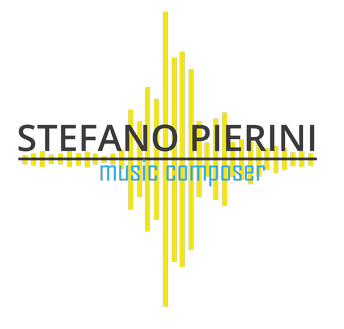
SCENA D’AUTUNNO for piano
秋來ぬと
目には爽に
見えねども
風音にぞ
愕かれぬる
(Although to the eye
it cannot clearly be seen
that autumn has come,
still I find myself surprised
by the whisper of the breeze)
(English translation by stefano Pierini)
SCENA D’AUTUNNO, inspired by a haiku composed by the japanese poet Fujiwara Toshiyuki no Ason (?-907), is an étude on the relations between timbre and harmony and, at the same time, a research on the resonance considered both from the physical point of view connected to the duration of sound in time and from that one of the perception and the ‘persistence’ in the memory of the sound itself. The ‘pretext’ of the composition is the Autumn, interpreted as a ‘metaphysical’ season of changing, despoliation and tension towards ‘stasis’ (the Winter); a moment of impermanence, transition and transformation towards a new state. The composition is structured in three sections, each developing the previous one and broaden it: three ‘variations’ in which the time stretches and decelerates while the sound expands in space and resonates to the limits of its physical capabilities, conquering the musical horizon completely. The music material, very homogeneous, almost redundant, is conceived as a ‘chromatic wind’ that wrap the onlooker of this scene in which everything that happens is slow and in a very veiled fashion, through a nearly hypnotic process; a ‘moment’ where the scan of time is replaced by its impression, with a movement from the quantitative to the qualitative. The chordal structures have a ‘modal tendency’, remotely inspired by the modal system of Olivier Messiaen, and lay on a pedal pitch which is the harmonic horizon, a D, that ends both the first and the second sections; the transformation process ends when it slides to a Eb at the conclusion of the third one: the resonance of the ‘frozen’ sonority of the last chord, obtained with the sympathetic vibration of the strings of some silently depressed keys, is the signal of the boundary of this state and the beginning of the next that, here, is only possible to glimpse. The polyphonic development of the composition is governed by the superimposition of three layers that, through a gradual detachment process, fill all the registers of the piano to the limits of the keyboard (and ideally beyond them); the climax reached in the third section, to which follows its echo, marks the outermost point of distance. After that starts the final section leading to the ‘freezing’ and last suspension. The proportional ratio of the sections inside the formal arch of the composition is 1:2:4. SCENA D’AUTUNNO was selected, between the 190 participating entries, as one of the fifteen final compositions of the Composition Contest Mauricio Kagel Wettbewerb 2010 organized by the Universität für Musik und darstellende Kunst of Wien.
- Piano



